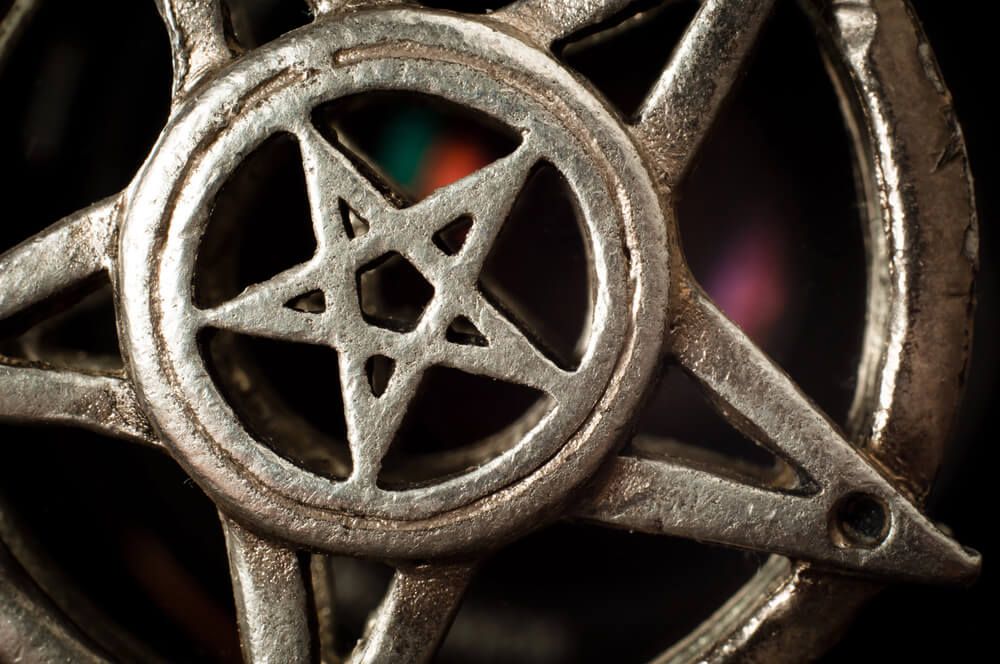9 Satanic Symbols and Their Meanings: Decoding Occult Imagery
Satanic symbols have long been shrouded in mystery and controversy, often misunderstood as sinister representations of malice or evil. In reality, these symbols are deeply tied to the philosophical and spiritual tenets Satanism represents, including freedom, individualism and the exploration of duality.
Rather than embodying negativity, Satanic symbolism reflects the empowerment of the individual and a rejection of conventional norms. By decoding these symbols, we can gain a better understanding of the rich history and ideologies behind Satanism and occultism.
What Are the Satanic Symbols?
Satanic symbols are visual representations that embody the beliefs and philosophies of Satanism, often reflecting concepts like individuality, rebellion and intellectual freedom. These symbols, which include iconic images like the Baphomet statue, the inverted pentagram and the Leviathan cross, are not inherently evil. Instead, they serve as tools for expressing the core tenets of Satanic thought and rejecting traditional religious dogma.
Here are nine prominent Satanic symbols and their meanings.
1. The Upside-Down Cross
The upside-down cross, commonly known as Satan’s cross, is one of the most recognizable Satanic symbols. While it is commonly associated with Satanism today, it originally had a different meaning. The symbol is an inverted version of the Latin cross traditionally used by Christians.
According to legend, when facing execution by crucifixion, Saint Peter requested to be crucified on an inverted cross because he felt unworthy to die as Jesus did. Over time, the inverted cross became a symbol of anti-Christian sentiment and rebellion. Today it is embraced by Satanists as a symbol of defiance against religious authority and overreach.
2. Leviathan Cross

The Leviathan cross, also referred to as the brimstone cross or sulfur symbol, is another significant emblem within Satanic symbolism. The symbol consists of an infinity sign at the bottom, with a two-barred cross (the cross of Lorraine) placed above it. Initially, the symbol was used in alchemy to represent sulfur, a substance associated with the human soul.
When Anton LaVey, the founder of modern Satanism, adopted the Leviathan cross, it became a representation of Satanism’s core belief in human autonomy and self-determination. The Satanic symbol’s infinity sign emphasizes the limitless nature of the human experience, rejecting the notion of a higher deity to worship.
3. The Sigil of Lucifer

The Sigil of Lucifer, also known as the Seal of Satan, is a symbol used in Satanic rituals and thought. Its origins can be traced back to the 16th century, though it was not widely used until the 20th century. The symbol is believed to represent Lucifer as the "light bringer," representing knowledge, enlightenment and rebellion.
The symbol also reflects the Satanic ideals of freedom, individualism and the pursuit of wisdom. For many Satanists, the Sigil of Lucifer is a reminder of their commitment to self-empowerment and the rejection of traditional religious dogma.
4. Two-Finger Salute
The two-finger salute, with one hand raised with two fingers pointing upwards and the other hand lowered with two fingers pointing downward, embodies the Hermetic principle of "as above, so below." This phrase originates from the ancient writings of Hermes Trismegistus, which gained prominence during the Renaissance and Reformation.
The symbolism represents the harmony between opposites like heaven and earth, light and dark, or the spiritual and material realms. The gesture reflects the interconnectedness and balance of all existence, a concept deeply important in occult philosophy.
While the two-finger salute is a modern symbol used in certain Satanic depictions like the Baphomet statue, it is not an ancient symbol directly tied to Satanism itself.
5. Two Young Children
The Baphomet statue also features two children standing on either side, which symbolize innocence and purity in contrast to the adult Baphomet. The children represent the duality of male and female, as well as the idea of learning and growing without the constraints of indoctrination. They balance the adult Satanic symbolism of Baphomet with the whimsy and purity of childhood.
The creators of the statue have emphasized that children should not fear the imagery; instead, they should appreciate it as a work of art.
6. The Caduceus

On the Baphomet’s stomach is the caduceus, an ancient Greek symbol of two serpents entwined around a staff. In the context of the statue, the caduceus symbolizes the reconciliation of opposites, such as the coexistence of Satanic and Christian ideologies without conflict. This concept suggests that opposing forces can exist in harmony, offering a powerful message of unity and balance.
7. Breasts and Gender Duality
While Levi’s original depiction of Baphomet featured breasts, the modern statue designed by the Satanic Temple excludes them to avoid diverting attention to gender debates. The inclusion of male and female children, however, continues to represent the balance between the masculine and feminine. The concept of dualism is a key theme in Satanic philosophy, where both genders are equally valued and celebrated for their contributions to the world.
8. The Pentagram

One of the most recognizable Satanism symbols, the pentagram appears prominently on both the forehead of the Baphomet and on the throne behind it. Often depicted as inverted, the pentagram is a symbol of Satanic thought, representing a rejection of conventional religious norms.
The inversion of the pentagram challenges the viewer to reconsider their values, question institutionalized religion and reflect on their own moral compass. This symbol represents an invitation to explore new perspectives and challenge existing worldviews.
9. Torch Between Horns
The torch of knowledge, depicted as a flame shining between the Baphomet’s horns, glorifies the pursuit of intellectual enlightenment. The symbolism of the flame, tied to both knowledge and the soul, speaks to the importance of seeking truth, personal growth and self-awareness. This image reflects and reinforces Satanism’s core belief in the value of reason and wisdom, encouraging individuals to rise above ignorance and pursue enlightenment.
Demystifying Satanic Symbols
By exploring these Satanic symbols more deeply, you may discover unexpected parallels with your own beliefs and come to realize that you align with Satanism more than you knew.
The Universal Life Church believes everyone—whether devout, curious, or somewhere in between—deserves the freedom to explore their beliefs. Ready to take the next step? Become ordained today and champion religious autonomy for yourself and others. By embracing a variety of spiritual expressions, we enrich our shared understanding and cultivate a more open-minded world.



